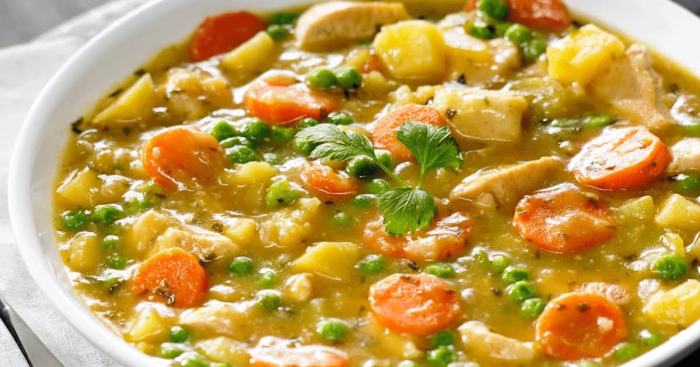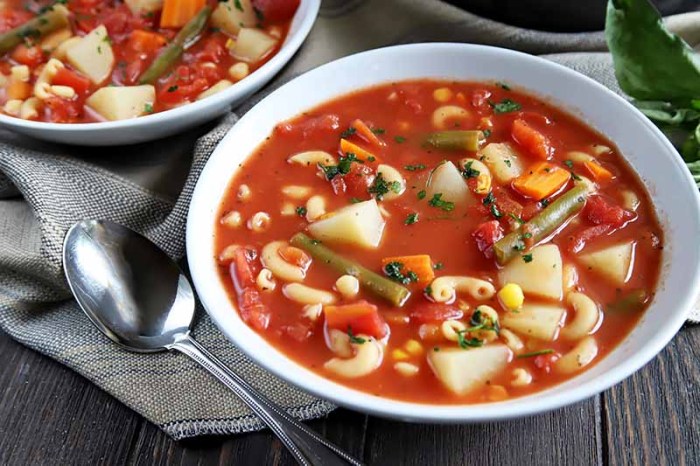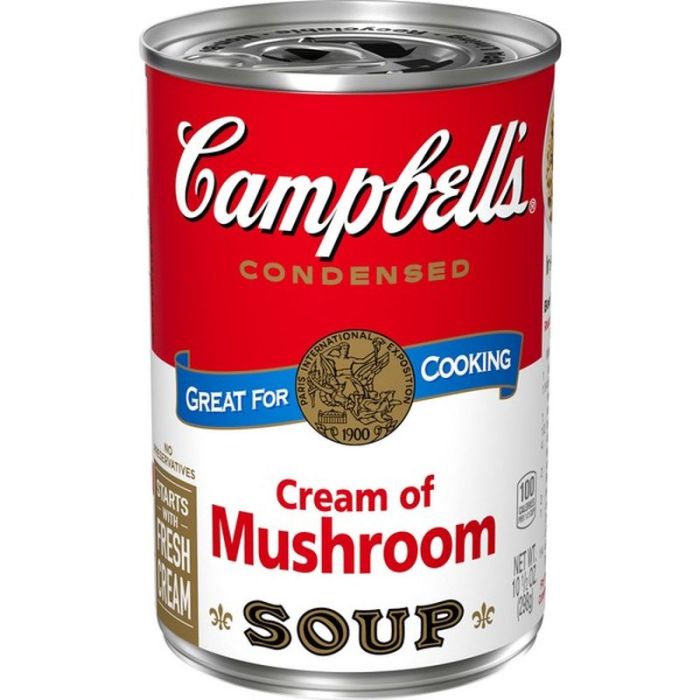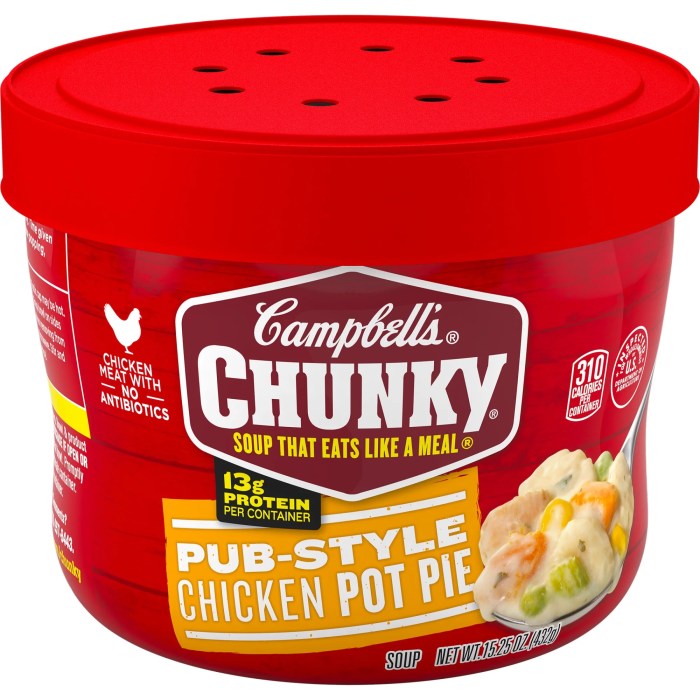Frozen Vegetable Soup: A Convenient and Flavorful Delight
Vegetable soup recipe with frozen vegetables – This recipe explores the versatility and convenience of using frozen vegetables to create a hearty and flavorful vegetable soup. Frozen vegetables offer a readily available and cost-effective way to enjoy a nutritious and delicious soup year-round, without the seasonal limitations of fresh produce. Vegetable soups, with their rich history spanning centuries and cultures, have always provided a comforting and nourishing meal.
This particular recipe prioritizes ease of preparation and efficient cooking methods, making it perfect for busy weeknights.
Benefits of Frozen Vegetables and a Brief History of Vegetable Soup
Using frozen vegetables in soup offers several advantages. Firstly, they are readily available, eliminating the need to shop for and prepare fresh vegetables. Secondly, they often retain more nutrients than fresh vegetables that have been stored for extended periods. Thirdly, they offer consistent quality and availability regardless of the season. Vegetable soups have a long and storied history, with variations found in nearly every culture.
From simple peasant fare to sophisticated culinary creations, vegetable soup has consistently provided sustenance and comfort. The earliest forms likely consisted of readily available seasonal vegetables and grains, evolving over time to incorporate diverse ingredients and culinary techniques.
Recipe Convenience and Efficiency
This recipe stands out for its convenience and efficiency due to three key factors: the use of readily available frozen vegetables, the minimal chopping required, and the relatively short cooking time. These features make it an ideal choice for busy individuals or families seeking a quick and healthy meal option.
Ingredient Selection and Preparation

Source: googleusercontent.com
This section details the essential ingredients and preparation steps for creating a delicious and nutritious frozen vegetable soup. Careful selection and preparation of ingredients are crucial for achieving optimal flavor and texture.
Five essential ingredients for a hearty vegetable soup using frozen vegetables include: a quality vegetable broth, a blend of frozen mixed vegetables, diced onion, diced carrots, and celery.
Thawing frozen vegetables is best done gradually in the refrigerator. This prevents abrupt temperature changes that can negatively impact texture and flavor. Rapid thawing methods, such as using a microwave, can lead to mushy vegetables. For optimal results, allow frozen vegetables to thaw completely before adding them to the soup.
Aromatics like onions, carrots, and celery form the flavor base of many soups. Start by finely dicing the onion, carrots, and celery. Sautéing these vegetables in a little oil before adding the broth enhances their flavor and adds depth to the soup.
| Vegetable Blend | Nutritional Highlights | Flavor Profile | Suitable Broth Type |
|---|---|---|---|
| Mixed Vegetables (peas, carrots, corn, green beans) | High in vitamins A and C, fiber | Sweet and slightly vegetal | Vegetable broth |
| Italian Vegetable Blend (peas, carrots, zucchini, tomatoes) | Rich in lycopene (tomatoes), vitamins A and C | Savory and slightly tangy | Chicken or vegetable broth |
| Hearty Vegetable Blend (potatoes, carrots, peas, green beans, corn) | Good source of carbohydrates and fiber | Hearty and filling | Beef or vegetable broth |
| Garden Vegetable Medley (broccoli, cauliflower, carrots, peas) | High in vitamins C and K, fiber | Slightly bitter, balanced by sweetness of carrots | Vegetable broth |
Broth and Flavor Development
The choice of broth significantly impacts the overall flavor profile of the soup. Vegetable broth provides a clean and subtly sweet base, while chicken broth adds richness and savory notes. Beef broth imparts a deeper, more robust flavor. Experimentation is key to finding your preferred flavor profile.
Enhancing the flavor profile of the vegetable soup can be achieved through various methods. Adding herbs, spices, and aromatics during the cooking process creates a complex and delicious flavor. Sautéing aromatics like garlic and ginger before adding the other ingredients infuses the soup with a deep, savory aroma.
Five herbs and spices suitable for vegetable soup, along with their flavor profiles and suggested quantities:
- Bay leaf (1-2): Earthy, slightly sweet, adds depth.
- Thyme (1 tsp): Earthy, slightly lemony, adds warmth.
- Rosemary (1/2 tsp): Piney, slightly woody, adds complexity.
- Oregano (1 tsp): Earthy, slightly peppery, adds a Mediterranean touch.
- Black pepper (to taste): Adds warmth and spice.
Cooking Methods and Techniques

Source: foodal.com
This section provides a step-by-step guide for making vegetable soup using frozen vegetables on the stovetop. Proper cooking techniques ensure the soup achieves the desired consistency and flavor.
Creating a hearty vegetable soup with frozen vegetables is a simple and efficient method for a nutritious meal. For those seeking a different flavor profile, consider exploring the vibrant tastes of a seaweed soup korean recipe , which offers a unique culinary experience. Returning to our frozen vegetable soup, remember that the ease of preparation makes it an excellent choice for busy weeknights.
- Sauté Aromatics: Sauté diced onions, carrots, and celery in olive oil until softened.
- Add Broth and Frozen Vegetables: Pour in vegetable broth and add the thawed frozen vegetables.
- Simmer: Bring to a simmer, then reduce heat and cook for 15-20 minutes, or until vegetables are tender.
- Season: Add herbs, spices, and salt and pepper to taste.
- Adjust Consistency: If desired, blend a portion of the soup for a creamier texture. Add more broth for a thinner consistency.
Variations and Additions, Vegetable soup recipe with frozen vegetables
This section explores various ways to customize the basic vegetable soup recipe, offering diverse flavor profiles and textures. Adding pasta or grains enhances the nutritional value and provides a heartier meal.
- Mediterranean Variation: Use an Italian vegetable blend, add diced tomatoes, olives, and oregano.
- Creamy Tomato Variation: Add a can of diced tomatoes and a splash of cream or coconut milk.
- Spicy Curry Variation: Use a curry powder blend and add coconut milk for a warming and aromatic soup.
Adding pasta (small shapes like ditalini or orzo) or grains (like barley or quinoa) adds texture and nutritional value. Cook the pasta or grain separately according to package directions, then add it to the soup during the last few minutes of cooking.
For a visually appealing presentation, serve the soup in a bowl with contrasting colors and textures. A vibrant green garnish (such as fresh parsley or chives) adds visual appeal and a fresh flavor. A swirl of cream or a sprinkle of grated cheese adds richness and texture. The soup’s colors should be rich and varied, reflecting the diverse ingredients used.
Serving Suggestions and Storage
This section provides guidance on serving and storing the vegetable soup to maintain its quality and flavor.
Vegetable soup can be served as a main course, a side dish, or as part of a larger meal. It pairs well with crusty bread, grilled cheese sandwiches, or a simple salad.
Store leftover soup in airtight containers in the refrigerator for up to 3-4 days. Allow the soup to cool completely before storing to prevent bacterial growth. When reheating, gently heat the soup on the stovetop or in the microwave, avoiding boiling, to preserve its texture and flavor.
FAQ Corner: Vegetable Soup Recipe With Frozen Vegetables
Can I use any type of frozen vegetables?
While most blends work, avoid overly starchy options like corn or peas which can make the soup mushy. A mix of carrots, celery, green beans, and peppers is ideal.
How long can I store leftover soup?
Store leftover soup in an airtight container in the refrigerator for up to 4 days. Always allow it to cool completely before refrigerating.
Can I make this soup in a slow cooker?
Absolutely! Follow the same ingredient list but adjust cooking time. Cook on low for 6-8 hours or high for 3-4 hours.
What if my soup is too thick or too thin?
Add more broth for a thinner consistency, or simmer uncovered for a longer time to reduce liquid and thicken the soup.


